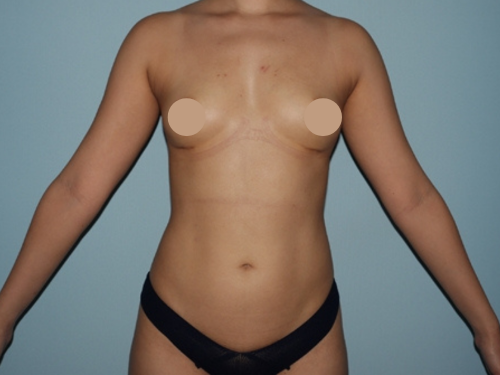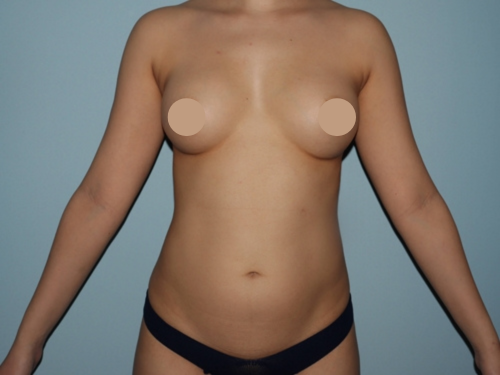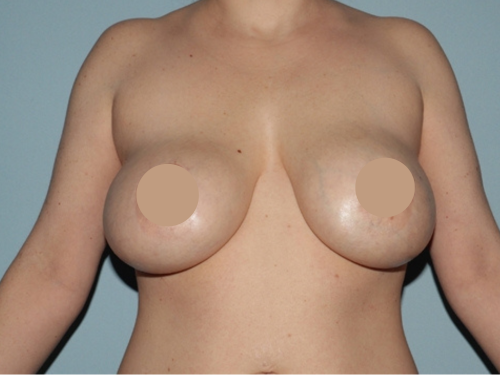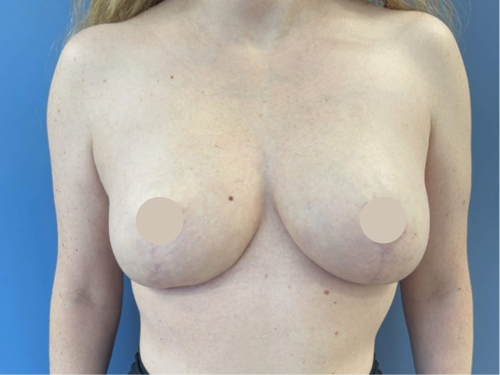The Ideal Implant was introduced in 2006. It was a novel saline implant with multiple shells and internal baffles to reduce rippling and improve integrity. Despite its benefits, the company ceased operations in May 2023 due to financial issues, leaving patients without warranty coverage.
This 31-year-old woman had the Ideal Implant placed just 7 years ago. Recently, she noted a change in the left breast described as feeling “less full”. Dr. Lyle evaluated her and determined that a partial deflation had occurred. Unfortunately, the company does not provide the patient with a replacement implant. The patient decided upon silicone gel breast implants and was very satisfied with her replacement. Generally, when this occurs in the absence of encapsulation the replacement is quite simple with minimal recovery. Although the implant was supposed to feel just as good as a silicone gel device, Dr. Lyle never felt this was entirely true. Although it did have some advantages over standard saline devices, it was still more palpable than a silicone gel implant. Most patients who developed a deflation of their devices have had their implants changed to silicone gel breast implants. Fortunately, these implants have improved warranties, but patient still should have some form of imaging such as ultrasound or MRI done periodically as leakage is not clinically apparent in many cases.
Women who have had this implant who develop problems should consult with a board-certified plastic surgeon familiar with these devices. Surgical options include replacement with a saline device or a silicone gel device. Fortunately, leakage of the saline is a harmless event with the body naturally absorbing the leaking saline. Because the device has 2 chambers it frequently does not deflate completely so the changes can be more subtle. Although it is not an emergency, prompt replacement is beneficial as the body’s natural tendency is to shrink the capsule around the implant which sometimes requires manipulation of the normal capsule during implant exchange which can affect symmetry.
Next Steps
If you’re considering a breast implant removal surgery in Raleigh, NC, and want personalized advice about your suitability, recovery, risks and results, I’d be happy to meet with you for a consultation. Let’s work together to help you achieve your best results – safely and beautifully.
To book a consultation please fill in the contact form or phone the office on (919) 307-8585.

Meet Dr. Glenn Lyle
Board Certified Plastic Surgeon
Dr. Glenn Lyle, a board-certified plastic surgeon, has been proudly serving the Raleigh, NC, community at Lyle Plastic Surgery and Aesthetics Center since 2002. With a deep passion for helping patients reclaim their confidence, Dr. Lyle specializes in transformative breast surgery and body contouring procedures. Whether addressing the effects of weight loss, pregnancy, or aging, his expert care and artistic approach empower individuals to look and feel their best. Dr. Lyle is dedicated to creating beautiful, natural results that reflect each patient’s personal journey and goals.
Further Reading
- Breast Revision in Raleigh, NC
- Breast Augmentation in Raleigh, NC
- Getting your Breast Implants Checked with a Doctor
- How Can I Check My Own Breast Implants? – Implant Self Examination
- How to Get Perkier Breasts with Motiva Breast Implants
- Why Is a C Cup Boob Job the Most Popular Choice?
- Recalled Breast Implants: Are Yours Recalled? Learn More





